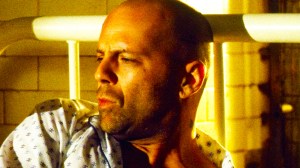The sci-fi genre boasts a surprising number of classic movies, many of which have contributed not just to the genre’s ongoing popularity but its increasing significance in the wider world of pop culture. So many sci-fi movies have earned classic status, many of which have gone on to inspire franchises and other movies that have attempted to emulate their success. Sci-fi movie plot twists and singularly memorable endings have become staples of the genre and have seemingly contributed in a major way to its success. However, thought-provoking and shocking endings might get more attention, but they aren’t always as great as they seem.
Videos by ComicBook.com
The complexities of science fiction mean that many of the genre’s stories run the risk of becoming overly complex. Relying on tropes such as time travel and mind-bending technology might work well for some movies, but it doesn’t always lead to perfect sci-fi movie endings. In fact, sometimes, a movie’s use of such plot devices only serves to convolute its ending, making its final scenes particularly difficult to understand when watching them closely. This is even the case for some of sci-fi’s most famous movie endings, because they simply don’t make much sense upon further examination.
3) Planet of the Apes (1968)

While it may have gone down in history as one of the best sci-fi movie twists of all time, the ending of 1968’s Planet of the Apes isn’t as clever as it seems. The twist, that the titular planet had actually been a far-future Earth all along, has since become something of a cliche within the sci-fi genre, though some still insist it holds up perfectly. At a glance, it’s a devastating moment for the movie’s protagonist that ends the story on a dark and hopeless note.
Looking more logically at the final scene, however, it starts to become clear that it doesn’t make much sense at all. The Statue of Liberty being the only surviving landmark that alerts Taylor to the planet’s true nature is nonsensical. If a single metal statue can survive that close to a body of water, then other structures would undoubtedly have been preserved by the intelligent society of apes that subjugated the surviving humans. In addition, the fact that the astronauts can survive on the planet without any adverse effects from its atmosphere should have at least tipped them off to where they were, although the movie’s ending makes it seem a major revelation.
2) Inception (2010)

Though it’s now widely known that Christopher Nolan makes complicated movies, that wasn’t always the director’s reputation. The movie that really cemented that was 2010’s Inception, which followed a group of dream-hopping thieves as they attempted to achieve the impossible task of organically planting an idea in someone’s sleeping mind. The premise alone seems complex, but almost every aspect of Inception‘s story proved to be mind-bending and spectacular from start to finish.
Inception‘s ending has earned it a reputation as a sci-fi movie you have to watch twice to understand, because it leaves things on an ambiguous note. The official explanation, offered by the director himself, is that the point of the ending is that the protagonist has accepted his current reality as true, whether it’s real or not. That’s simply not a very satisfying ending, though, and it leaves so many aspects of Inception‘s story open. The ending doesn’t make sense from the perspective that it doesn’t really resolve anything, as it invokes the old cliche of a large question mark being cheekily tacked on to the ending title.
1) 2001: A Space Odyssey (1968)

Stanley Kubrick’s 1968 movie 2001: A Space Odyssey is commonly hailed as one of the sci-fi genre’s few true masterpieces. Inspired by the work of Arthur C. Clarke and co-written by the sci-fi author and Kubrick, it’s a movie that has now been loved for generations, with its visual effects and narrative themes widely praised. It also features a team of astronauts facing off against one of the most terrifying sci-fi movie robots ever to grace the screen, giving it a little more mass appeal.
The thing is, the movie’s ending barely makes any sense. After discovering the third of a series of mysterious obelisks on Jupiter, astronaut David Bowman sees himself rapidly cycle through stages of life in a random bedroom before being transformed into a giant fetus floating through space. Many have attempted to decipher what the movie’s ending means, but it remains one of the most convoluted and frustratingly nonsensical sci-fi endings of all time.
What do you think? Leave a comment below and join the conversation now in the ComicBook Forum!









